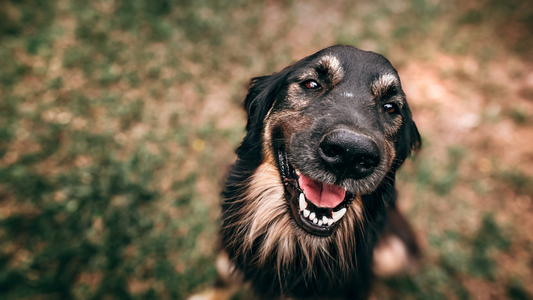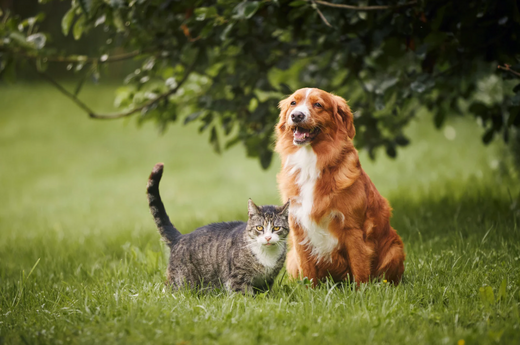Understanding whether your pet is at a healthy weight is crucial for their overall wellbeing. At Healthy Pet Co., we believe regular assessment of your pet’s body condition score (BCS) is essential to maintaining health. This guide will help you learn how to evaluate your pet’s BCS and ensure it stays in great shape.
What is a Body Condition Score (BCS)?
A Body Condition Score (BCS) is a visual and tactile assessment tool that helps determine if a pet is underweight, overweight, or at an ideal weight. BCS scales typically range from 1 to 9, where 1 means extreme underweight, 9 indicates extreme obesity, and 5 represents an ideal weight.
Why is BCS Important?
Regularly assessing your pet’s BCS helps you keep track of their health and spot potential weight issues early. Maintaining an ideal BCS can prevent various health problems, including diabetes, heart disease, joint pain, and respiratory issues.
How to Assess Your Pet's BCS
Step 1: Visual Inspection
Start by visually inspecting your pet from different angles. Look for the following indicators:
- Ribs: You should be able to see or feel your pet’s ribs with a slight fat covering. In overweight pets, the ribs will be difficult to feel.
- Waist: When viewed from above, your pet should have a visible waistline behind the ribs. Overweight pets have little to no waist definition.
- Abdomen: Your pet’s abdomen should be tucked up from the side. In overweight pets, the abdomen may hang low and lack an upward tuck.
Step 2: Tactile Examination
After the visual inspection, use your hands to feel your pet’s body:
- Ribs: Run your hands along your pet’s sides. You should be able to feel the ribs without pressing hard. If you can’t feel the ribs easily, your pet may be overweight.
- Spine and Hip Bones: Feel along the spine and hip bones. These bones should be noticeable but not protruding.
- Belly: Feel your pet’s belly. There should be a small amount of belly fat, but excessive fat points to being overweight.
Step 3: Compare to a BCS Chart
Refer to a BCS chart to compare your observations. Most charts have descriptions and images that show what each score looks like, helping you assess your furry friend’s condition accurately.
Ideal BCS for Different Pets
Dogs
- Underweight (1-3): Ribs, spine, and hip bones are prominent. There is little to no body fat.
- Ideal Weight (4-5): Ribs are easily felt with a slight fat covering. The waist is visible from above, and the abdomen is tucked up.
- Overweight (6-9): Ribs are difficult to feel under a thick fat layer. The waist is absent or barely visible, and the abdomen may sag.
Cats
- Underweight (1-3): Ribs, spine, and hip bones are prominent. There is little to no fat covering.
- Ideal Weight (4-5): Ribs are easily felt with a slight fat covering. The waist is visible, and there is minimal abdominal fat.
- Overweight (6-9): Ribs are difficult to feel under a thick fat layer. The waist is absent, and there is noticeable abdominal fat.
Maintaining an Ideal BCS
Balanced Diet
Give your pets a balanced diet appropriate for their age, breed, and activity level. You want to avoid overfeeding and provide portion-controlled meals. Consult your vet for dietary recommendations tailored to their needs.
Need help finding the perfect food? Visit Healthy Pet Co. for all your high-fibre and healthy food needs. Our HPC calculator is also a great tool to help you build your pet’s meal plan.
Regular Exercise
Regular physical activity is essential for maintaining a healthy weight. Spend time bonding with your pet in daily exercises suited to their breed and energy levels, such as walking, running, or playing fetch.
Regular Check-Ups
Schedule regular veterinary check-ups to monitor your pet’s weight and overall health. Your vet can provide personalised advice on diet, exercise, and any necessary adjustments to keep your pet healthy.
Avoid Human Food and Treats
Eliminate food scraps and human treats from your pet’s diet. Instead, opt for low-calorie, high-fibre treats specifically designed for pets. This helps ensure they receive the right nutrients without the extra calories.
Monitor and Adjust
Assess your pet’s BCS regularly, we recommend doing this monthly and adjusting their diet and exercise routine as needed. Tracking their progress can help you make informed decisions about maintaining their ideal weight. Most importantly, be patient! Just like humans, it may take time for your pets to start shedding weight.
Your Pet’s Key To Health & Wellbeing
Understanding and monitoring your pet’s Body Condition Score is essential for their health and wellbeing. By regularly assessing their BCS, you can detect weight issues early and take steps so your pet maintains a healthy weight. At Healthy Pet Co., we’re here to support you with expert advice and high-quality products tailored to your pet’s needs. Together, we can help your fuzzy friends live their happiest, healthiest lives.





